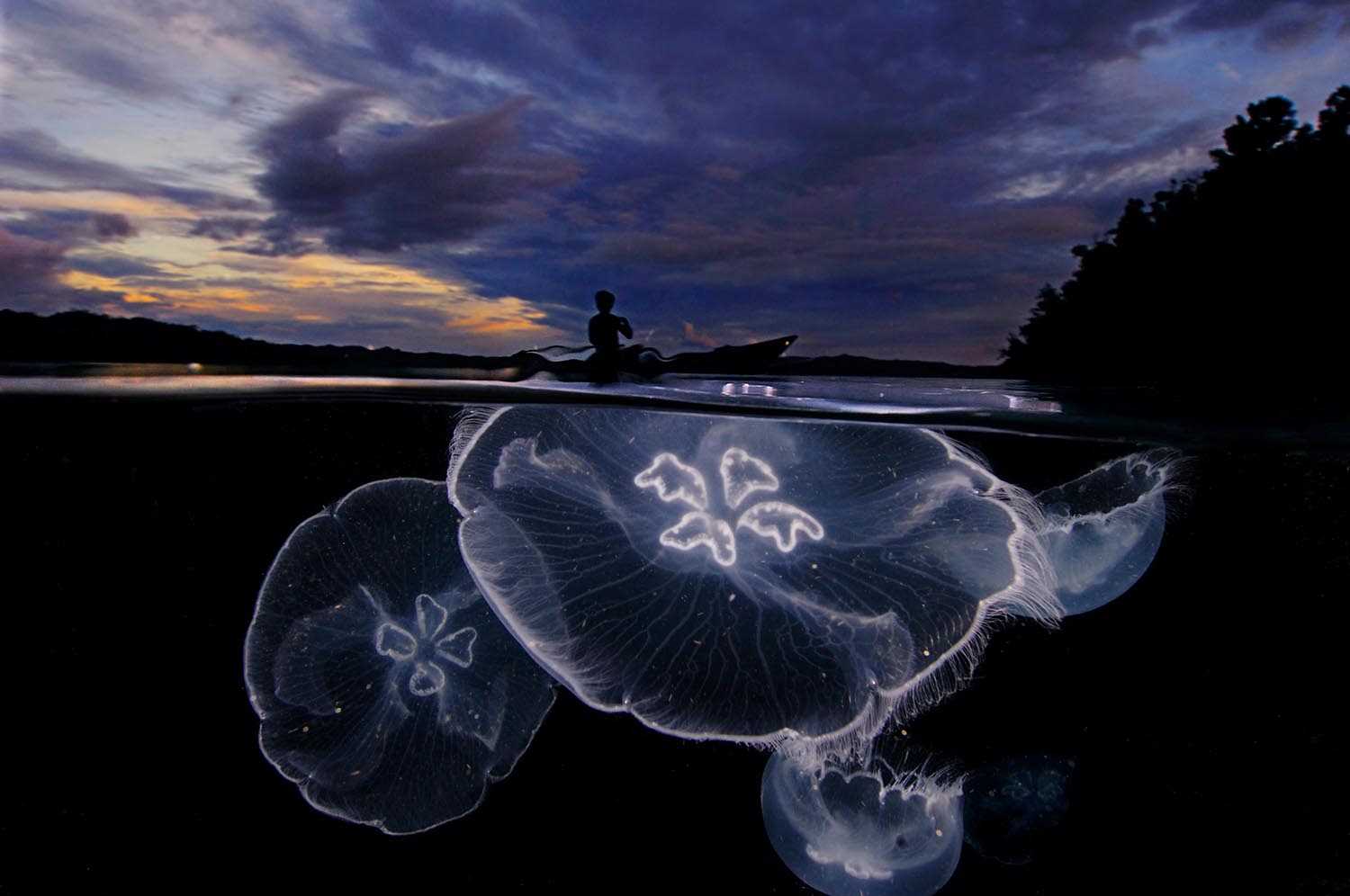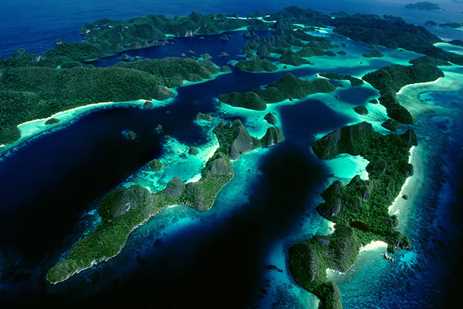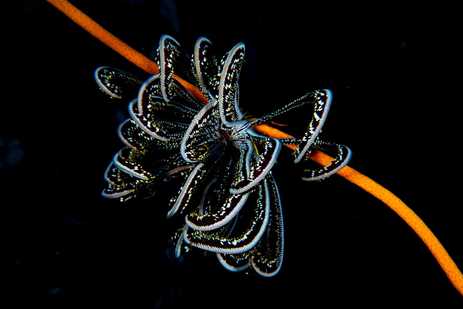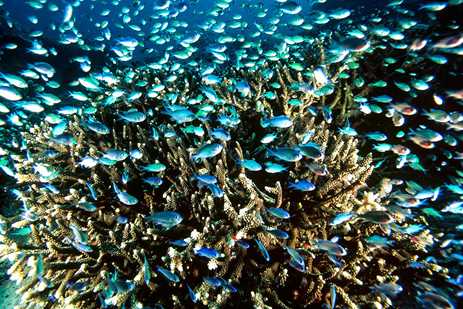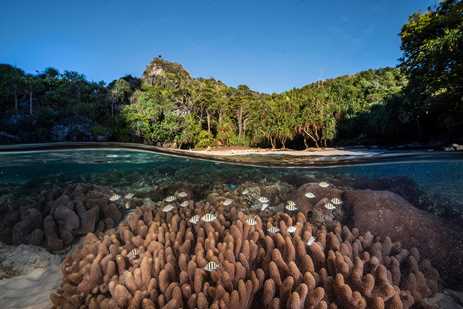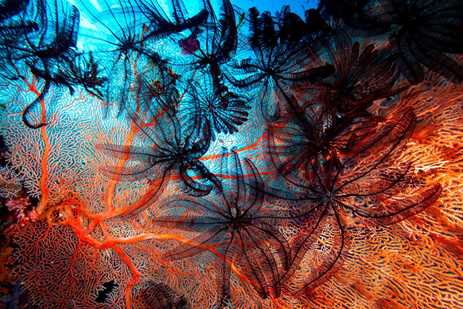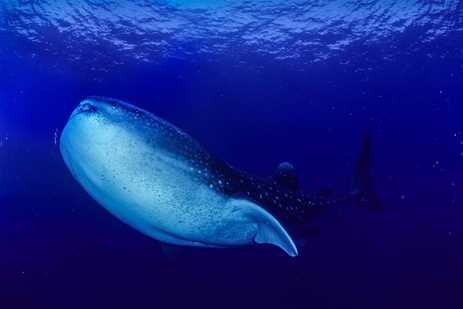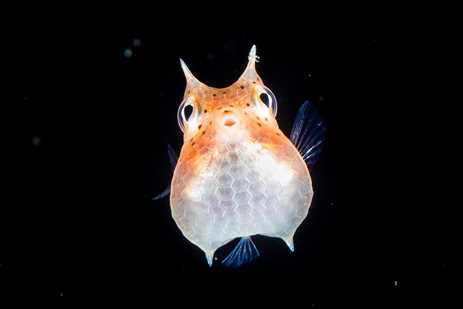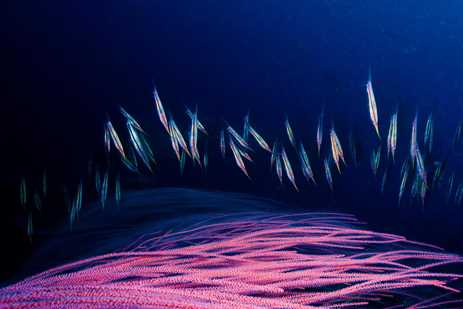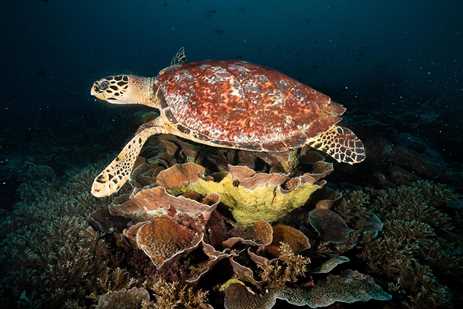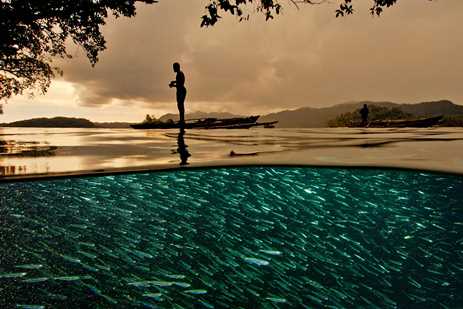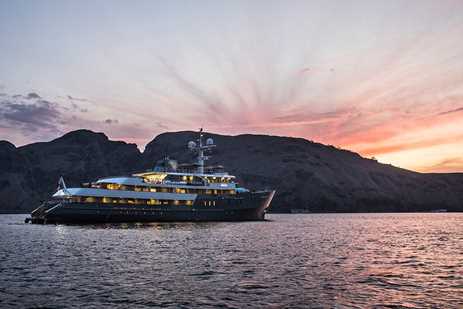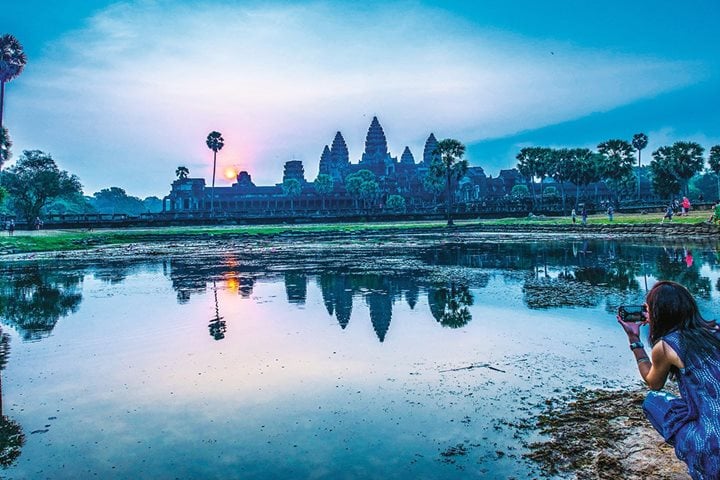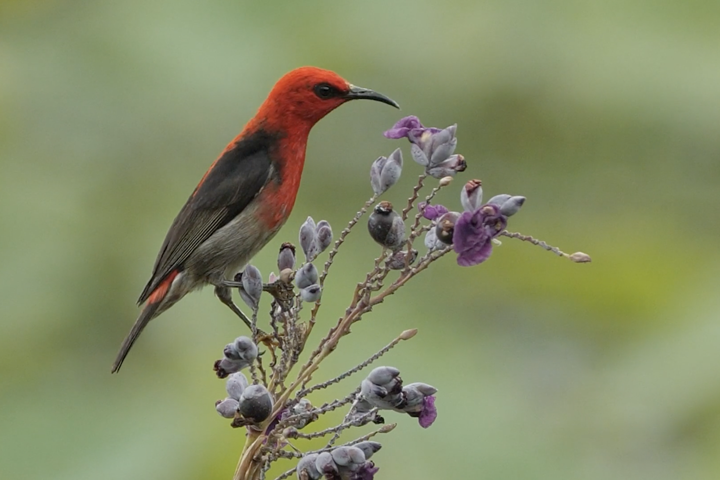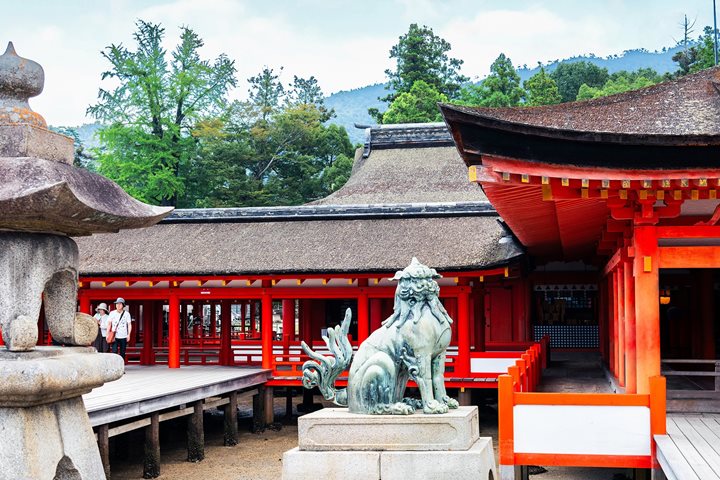“The richest coral reef in the world!” That is how National Geographic photographers David Doubilet and Jennifer Hayes describe Indonesia’s Raja Ampat. The celebrated photographers have explored this marine paradise numerous times and one thing they’ve learned is to always expect the unexpected.
In 2026, National Geographic-Lindblad Expeditions is returning to the region aboard Aqua Blu, a long-range ocean explorer yacht purpose-built to navigate these expansive seas and provide access to this legendary dive and snorkel destination. On our brand-new voyage, Indonesia's Spice Islands and Raja Ampat, you'll spend several days discovering the myriad undersea wonders that await in Raja Ampat. Here, Doubilet and Hayes give you a stunning glimpse at what's to come if you join us next year.

